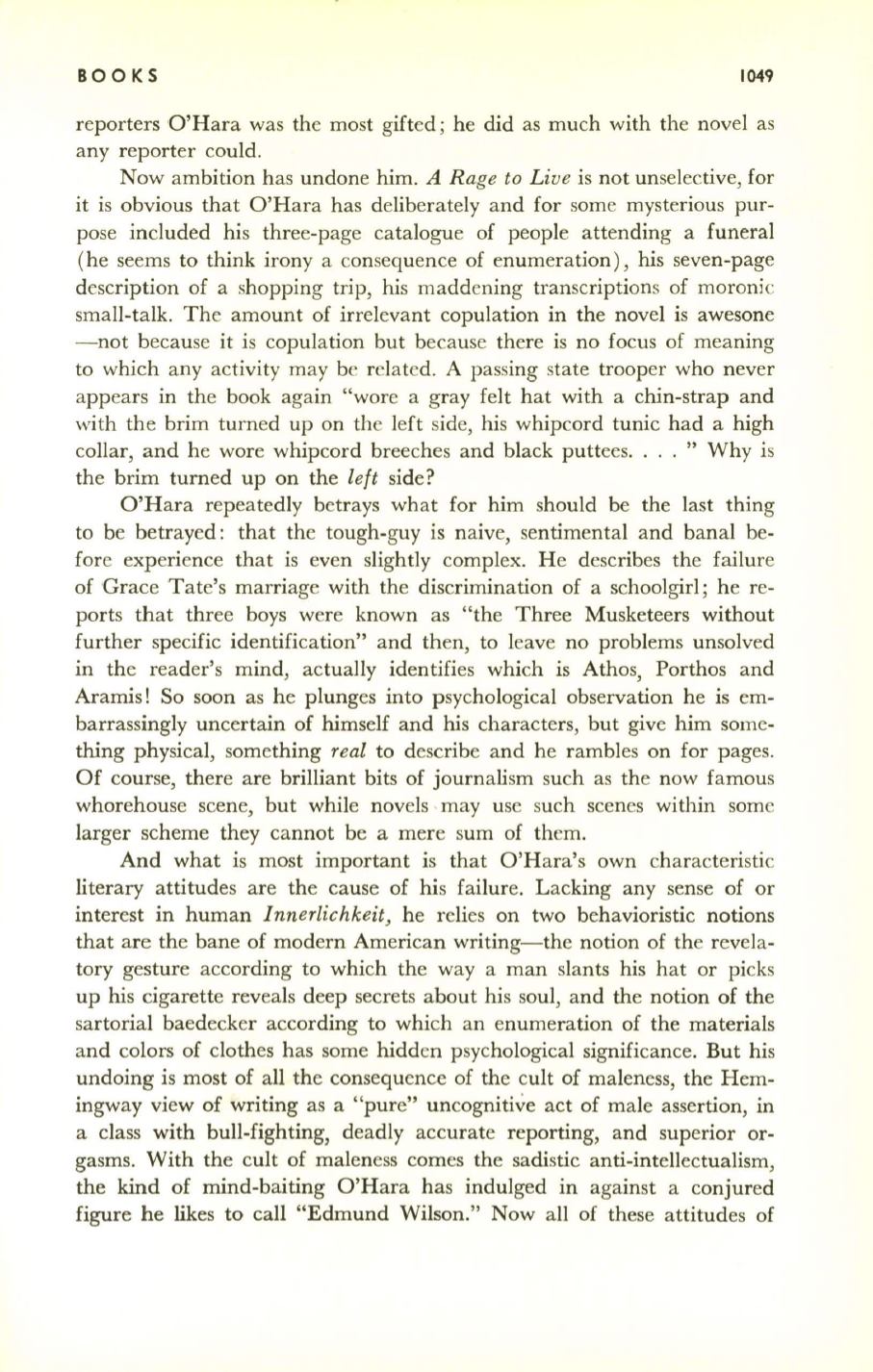
BOO KS
1049
reporters O'Hara was the most gifted; he did as much with the novel as
any reporter could.
Now ambition has undone him.
A Rage to Live
is not unselective, for
it is obvious that O'Hara has deliberately and for some mysterious pur–
pose included his three-page catalogue of people attending a funeral
(he seems to think irony a consequence of enumeration), his seven-page
description of a shopping trip, his maddening transcriptions of moronic
small-talk. The amount of irrelevant copulation in the novel is awesone
-not because it is copulation but because there is no focus of meaning
to which any activity may be related. A passing state trooper who never
appears in the book again "wore a gray felt hat with a chin-strap and
with the brim turned up on the left side, his whipcord tunic had a high
collar, and he wore whipcord breeches and black puttees.... " Why is
the brim turned up on the
left
side?
O'Hara repeatedly betrays what for him should be the last thing
to be betrayed: that the tough-guy is naive, sentimental and banal be–
fore experience that is even slightly complex. He describes the failure
of Grace Tate's marriage with the discrimination of a schoolgirl; he re–
ports that three boys were known as "the Three Musketeers without
further specific identification" and then, to leave no problems unsolved
in the reader's mind, actually identifies which is Athos, Porthos and
Ararnis! So soon as he plunges into psychological observation he is em–
barrassingly uncertain of himself and his characters, but give him some–
thing physical, something
real
to describe and he rambles on for pages.
Of course, there are brilliant bits of journalism such as the now famous
whorehouse scene, but while novels may use such scenes within some
larger scheme they cannot be a mere sum of them.
And what is most important is that O'Hara's own characteristic
literary attitudes are the cause of his failure. Lacking any sense of or
interest in human
Innerlichkeit,
he relies on two behavioristic notions
that are the bane of modern American writing-the notion of the revela–
tory gesture according to which the way a man slants his hat or picks
up his cigarette reveals deep secrets about his soul, and the notion of the
sartorial baedecker according to which an enumeration of the materials
and colors of clothes has some hidden psychological significance. But his
undoing is most of all the consequence of the cult of maleness, the Hem–
ingway view of writing as a "pure" uncognitive act of male assertion, in
a class with bull-fighting, deadly accurate reporting, and superior or–
gasms. With the cult of maleness comes the sadistic anti-intellectualism,
the kind of mind-baiting O'Hara has indulged in against a conjured
figure he likes to call "Edmund Wilson." Now all of these attitudes of


